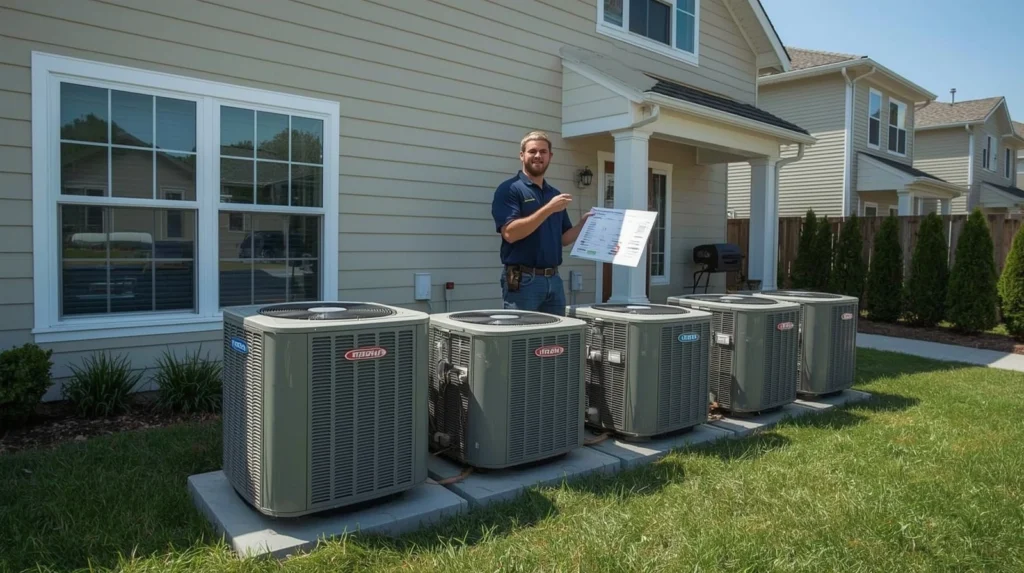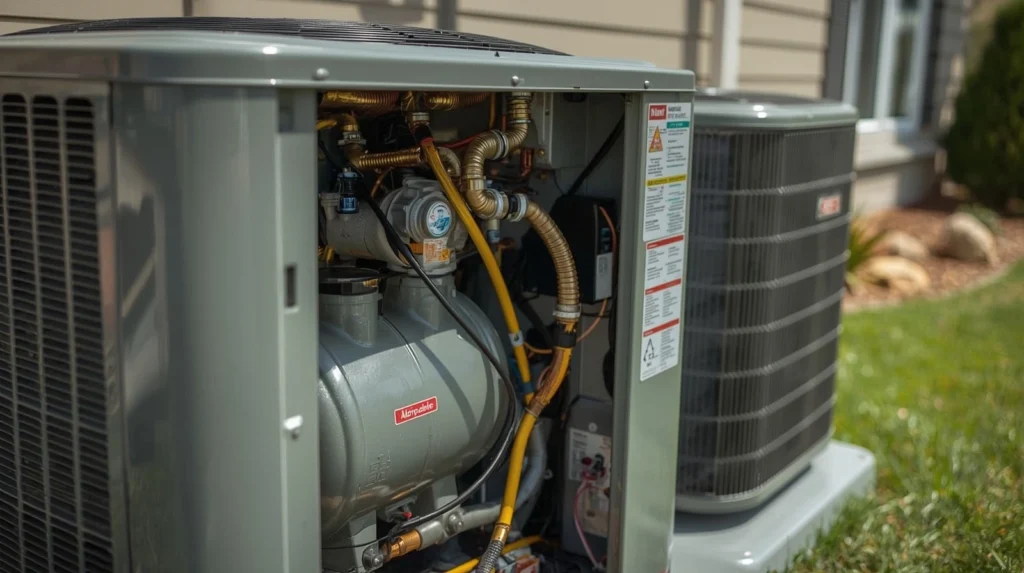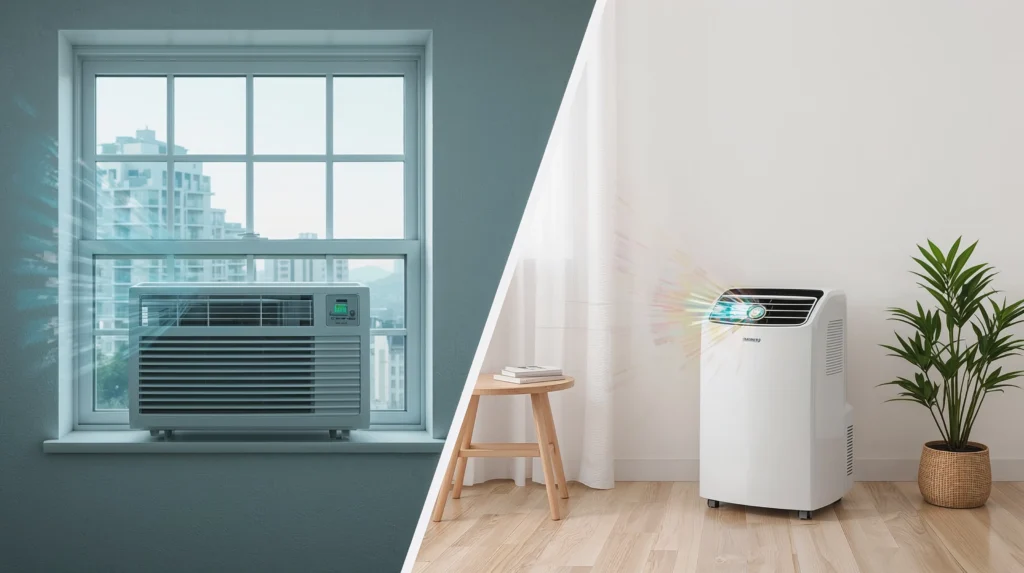Can I Install an Air Conditioning Unit Into Any Wall?
When the temperature begins offevolved rising, one of the best approaches to preserve your house cushty is via way of means of putting in a wall-hooked up aircon unit. However, many owners wonder, “Can I install an air conditioning unit into any wall?” The brief answer: now no longer each wall is appropriate for installation — however with the proper making plans and expert steering from Hutchinson Heating and Air, you could adequately and correctly deployation a unit that continues your area flawlessly cool. This manual explains the whole thing you want to realize approximately AC gadgets hooked up at the wall, putting in thru-the-wall air conditioners, and what to remember earlier than starting your wall mount AC unit installation. Understanding Wall-Mounted Air Conditioners Wall-hooked up AC gadgets (additionally called thru-the-wall AC gadgets) are compact structures designed to match without delay thru a gap for your wall. They feature like window gadgets however are completely installed, supplying a sleek, easy look with out taking on window area. Advantages of Wall-Mounted AC Units Energy Efficiency: Modern wall AC gadgets offer tremendous cooling even as ingesting much less power. Space Saving: Perfect for small rooms or flats with out to be had windows. Quiet Operation: These gadgets produce much less noise as compared to window ACs. Aesthetic Appeal: Offers a seamless, integrated search for your domestic. Better Air Distribution: Evenly circulates cool air at some point of the room. If you`re making plans to put in a through-the-wall air conditioner, it`s critical to recognize your wall shape and domestic setup earlier than making any cuts. Can I Install an Air Conditioning Unit Into Any Wall? The question, “Can I install an air con unit into any wall?”, regularly relies upon at the type of wall and placement. While it can be tempting to put in the unit anywhere, numerous critical elements decide whether or not the wall is suitable. 1. Wall Type and Structure Walls are available exceptional forms—load-bearing, non-load-bearing, exterior, and interior—and now no longer all can deal with an AC unit at the wall. Exterior Walls: These are excellent for installing through-the-wall air conditioners due to the fact they permit right ventilation, exhaust, and condensate drainage. Interior Walls: Typically unsuitable, as they lack out of doors publicity for the returned of the AC unit. Load-Bearing Walls: Can preserve the burden of the system, however reducing into them have to be performed cautiously with the aid of using specialists to save you structural damage. Non-Load-Bearing Walls: Easier to paintings with however nonetheless require reinforcement across the unit opening. Tip: Before set up, have Hutchinson Heating and Air check out your wall type. Our licensed HVAC technicians make sure secure and dependable AC unit installation with out compromising your domestic`s integrity. You may read How Much Does It Cost to Install AC? 2. Wall Material Considerations Your wall cloth without delay impacts the set up technique and cost. Drywall and Wood: Easiest substances for wall mount AC unit installation. Brick or Concrete: Strong however require specialised equipment and mounting equipment. Insulated Walls: Need sealing to save you air leaks and hold efficiency. Our professionals at Hutchinson Heating and Air are professional at installing in AC unit mounted on the wall throughout all wall types, making sure long-lasting results. 3. Proper Placement for Optimal Cooling Even in case your wall is appropriate, the location of your AC unit on the wall makes a large distinction in performance. Install the unit at eye-degree or better for green air circulation. Avoid direct daylight or warmness reassets that might have an effect on cooling. Choose a principal area withinside the room for even airflow. 4. Electrical and Drainage Requirements Every wall mounted air conditioner needs: A committed electric outlet with the proper voltage. Proper drainage for condensation. If your wall doesn`t have these, an HVAC professional can set up wiring and drainage appropriately. Hutchinson Heating and Air handles all essential electric connections and guarantees your AC unit set up meets protection standards. Installing Through-the-Wall Air Conditioner: Step-with the aid of using-Step While DIY set up can also additionally appear appealing, slicing into your wall with out right enjoy can cause harm and strength inefficiency. Here`s how experts at Hutchinson Heating and Air deal with the system appropriately and efficiently: Step 1: Wall Inspection and Measurement We start with the aid of using figuring out a appropriate wall and figuring out the perfect length of the hole primarily based totally in your AC model. Step 2: Wall Cutting and Framing Our technicians cautiously reduce an opening, reinforcing the rims to hold wall strength. Step 3: Mounting the AC Unit We location the AC unit at the wall, making sure best alignment and a cushty match for max efficiency. Step 4: Sealing and Insulating Proper sealing prevents air leaks, moisture buildup, and improves strength savings. Step 5: Testing and Calibration Finally, we take a look at your AC system, affirm drainage, and make sure the whole thing runs easily earlier than completion. Why Choose Hutchinson Heating and Air? When it involves installing through-the-wall air conditioners or AC unit mounted on the wall, revel in and precision matter. At Hutchinson Heating and Air, we take pleasure in offering: Certified HVAC Technicians Quality Equipment and Materials Safe, Code-Compliant Installations Affordable and Transparent Pricing Excellent Customer Support We`re the relied on call for wall mount AC unit installation and restore offerings throughout Temecula, Murrieta, and surrounding areas. Conclusion In conclusion, while it may seem simple to install an air conditioning unit into any wall, proper placement, wall type, and structural safety matter a lot. Installing it incorrectly can lead to air leaks, poor performance, or even wall damage. That’s why it’s always best to trust certified HVAC professionals. At Hutchinson Heating and Air Conditioning, we specialize in AC installation in Murrieta. Our experienced team ensures your unit is installed safely and performs efficiently all year long. Contact us today for expert and reliable cooling solutions. Frequently Asked Questions (FAQs) 1.
Can I Install an Air Conditioning Unit Into Any Wall? Read More »






